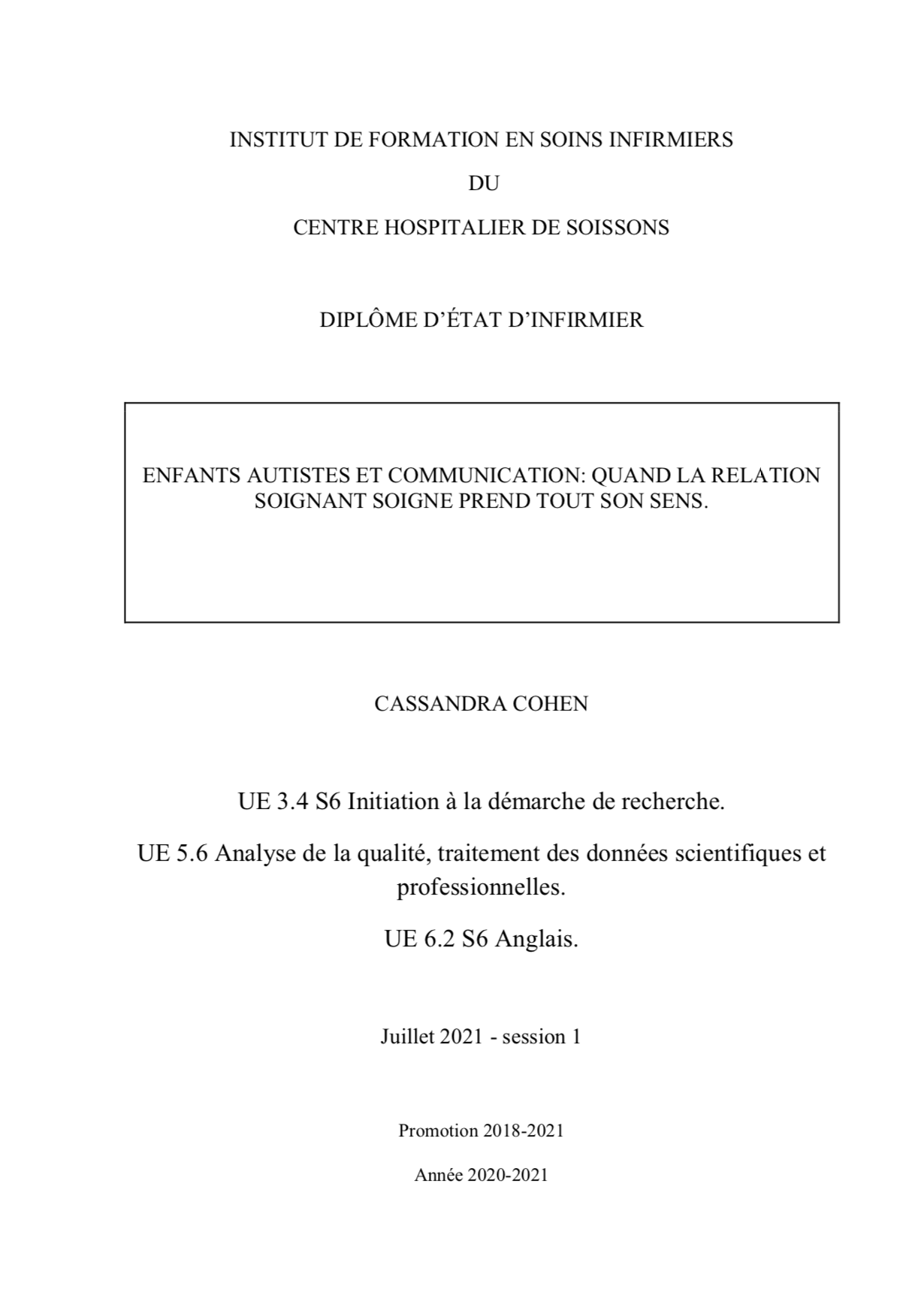Enfants autistes et communication : quand la relation soignant-soigné prend tout son sens
- Exemples de TFE

Cassandra COHEN
2021
Résumé
Ce travail de fin d’étude en soins infirmiers s’appuie sur une situation vécue lors de mon stage au sein d’un hôpital de jour en pédopsychiatrie avec un enfant atteint de troubles du spectre autistique. Suite à cette situation, je me suis questionnée: en quoi la mise en œuvre de moyens de communication adaptés favorise la relation soignant-soigné et permet une prise en soin infirmière compatible aux enfants atteints de trouble du spectre autistique?
Lors de ce travail, j’ai développé différents concepts en lien avec ma situation comme la communication verbale et non verbale ainsi que la relation soignant-soigné. Les outils de communication ont aussi été étayés car ils peuvent contribuer à la relation soignant-soigné, qui fait partie du rôle de l’infirmier. Ensuite, j’ai confronté mes recherches aux diresd’infirmiers qui ont soulevé d’autres obstacles à la communication notamment les représentations sociales. Nous pouvons nous demander en quoi les représentations sociales engendrent des difficultés de communication ?
Mots clés
Communication – Relation soignant-soigné – Interactions sociales – Trouble du spectre autistique